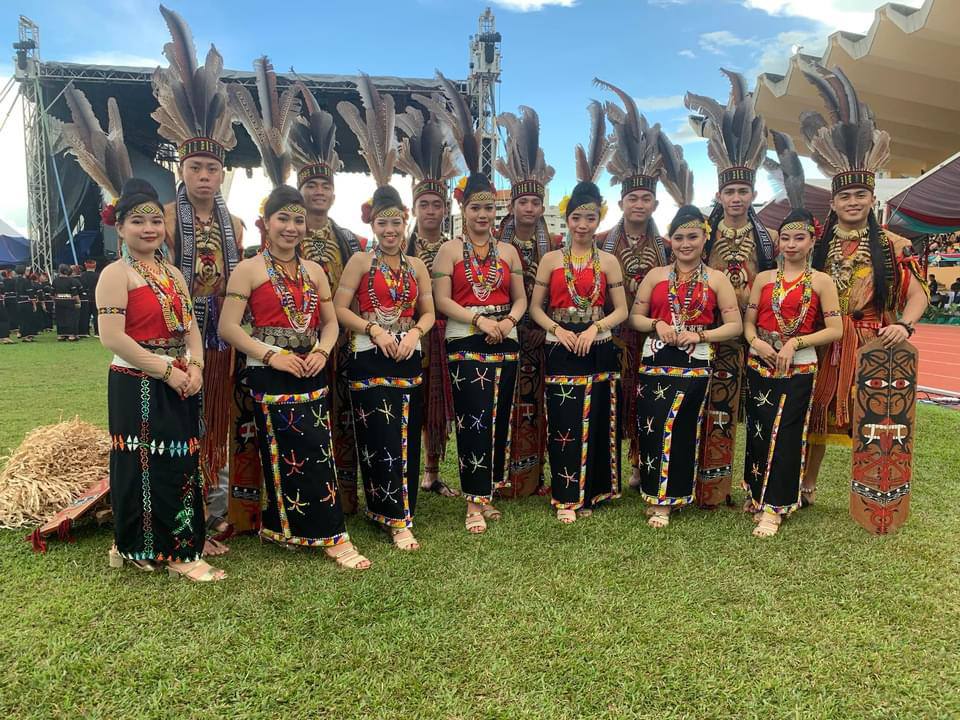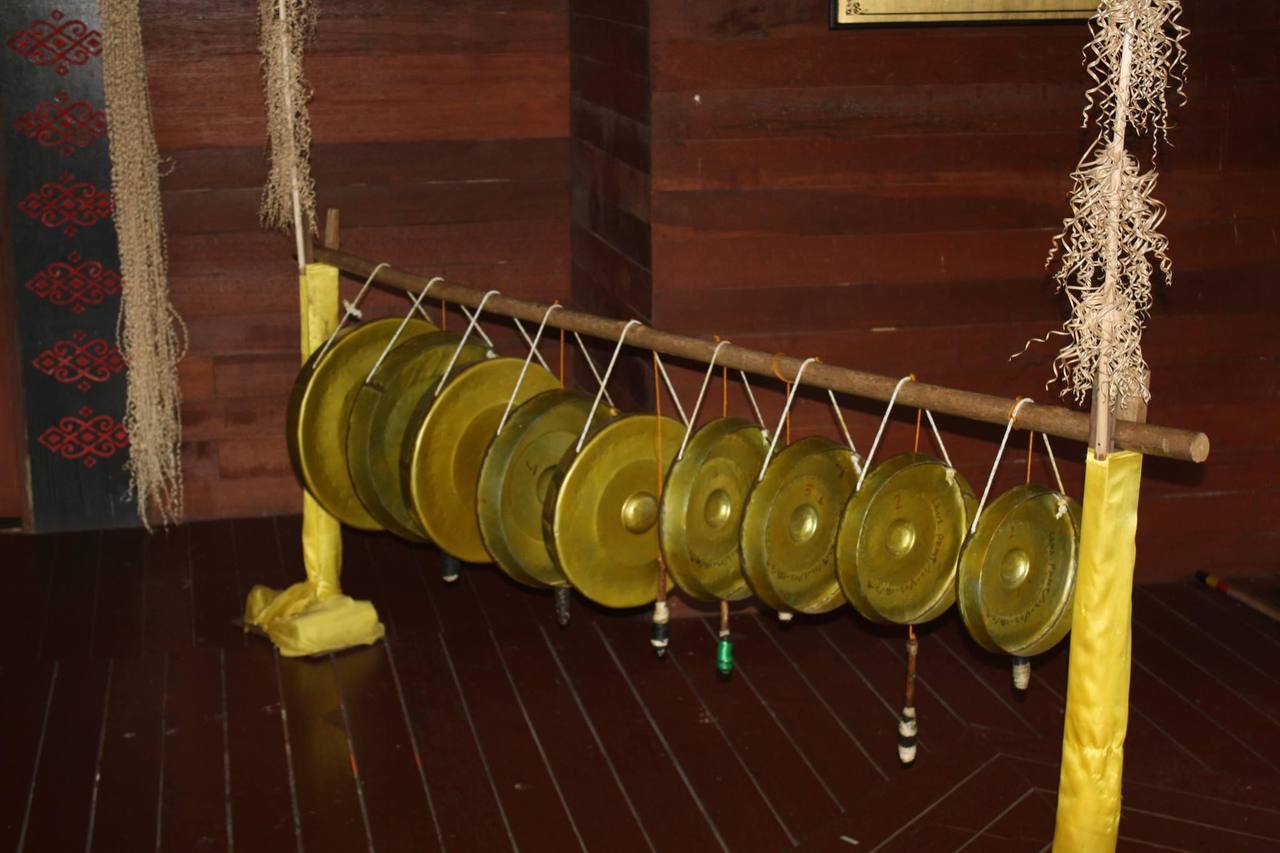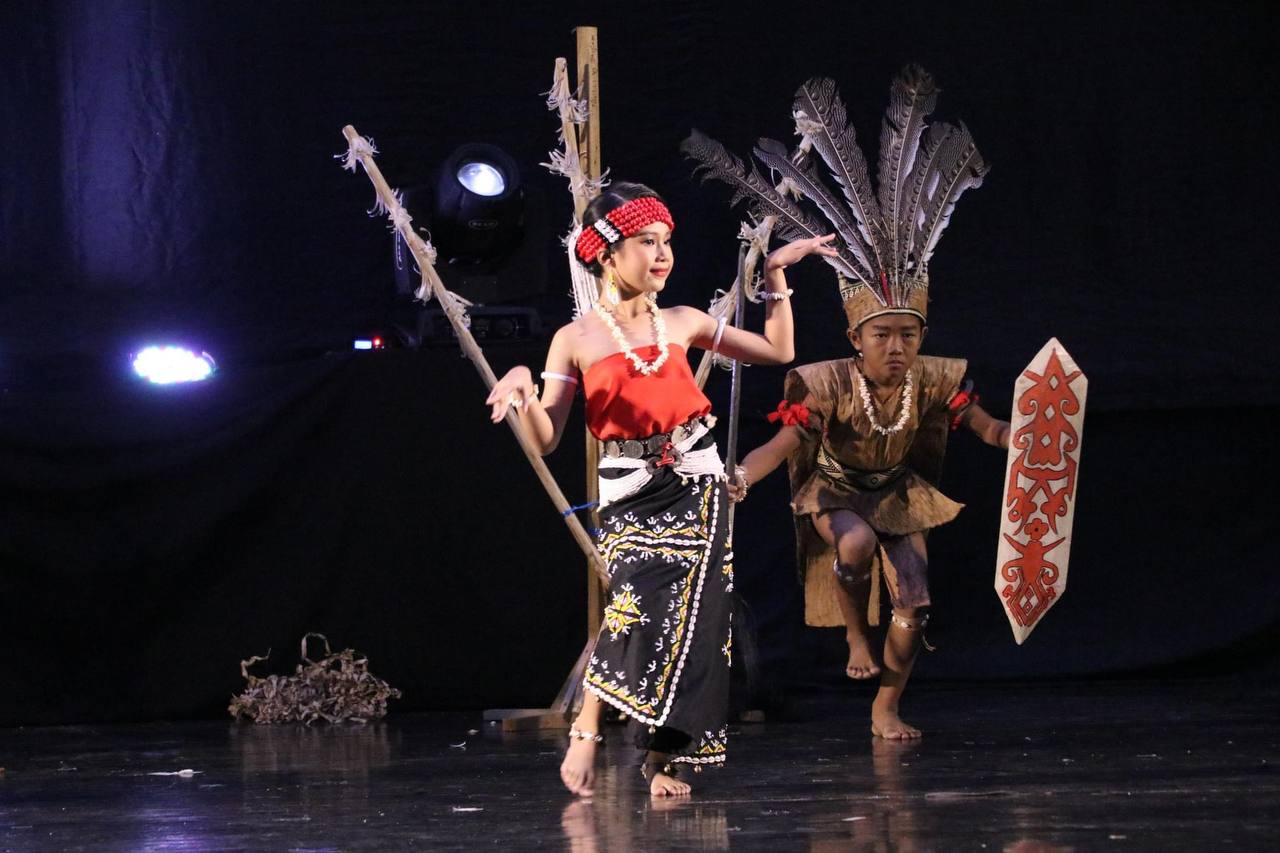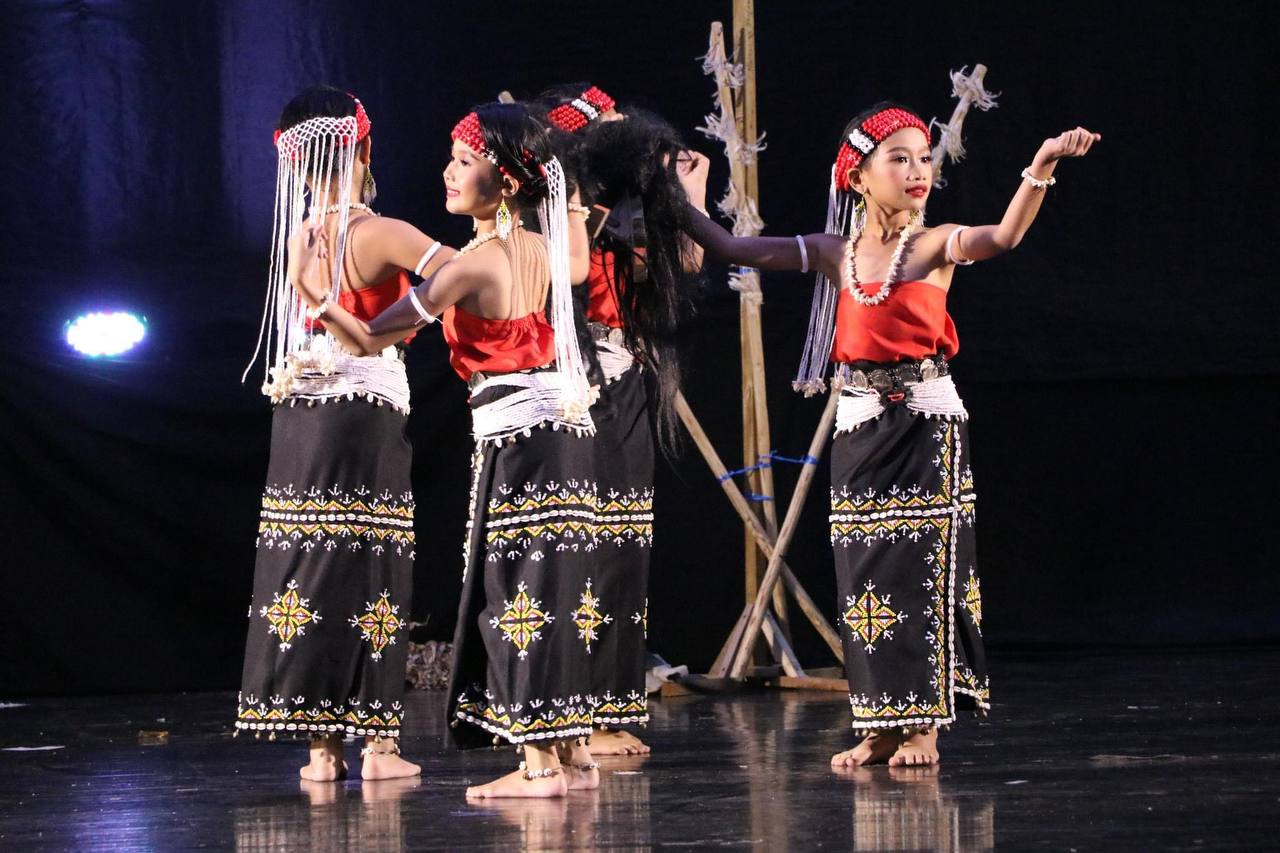ARTS AND CULTURE INFORMATION GATEWAY
Immerse yourself in the colorful world of art and culture! From traditional heritage to contemporary works, discover uniqueness that reflects the nation's identity and identity
ALANG RA ILLAU
Picture
7
Video
No record
Today's Visitor
9
Number of Visitors
645
Introduction and history
Alang Ra Illau is a traditional dance of the Murut ethnic from the Tahol tribe, predominantly residing in the districts of Nabawan, Pensiangan, and Tenom. The term ‘Alang’ means "to dance," while ‘Illau’ refers to a ceremonial exchange of forest produce, such as fruits, between villages. Accordingly, the dance portrays movements that mimic the act of picking low-hanging fruits, which are easily accessible. Female dancers sometimes carry baskets, locally known as ‘Basung’, slung over their backs to collect the harvested fruits. These fruits are then exchanged with villagers or neighbouring communities.
This dance is specifically performed for celebratory events such as the Kaamatan Festival, the Kalimaran Festival, weddings, or any other type of celebration. This is because the dance serves as an entertaining performance that adds liveliness to the occasion.
Male dancers wear costumes made from tree bark derived from the ‘Aputul’ tree (Artocarpus kunstleri). The male attire includes a sleeveless bark jacket called ‘Babaru Puputul’ paired with a loincloth known as ‘Avah Puputul’. The headpiece, called ‘Lalandau’, is adorned with feathers from the Sewah Tahu bird, which the local Murut community refers to as ‘Tuwou’ feathers. To enhance the headpiece, a woven fabric is tied around the Lalandau to secure and stabilise it, ensuring it stays firmly in place during the dance.
The accessories for the male dancer's legs and arms include ‘Holong,’ made from dangling yellow and black fabric. During performances, male dancers typically use props such as a machete, known as ‘Hayang,’ and a wooden shield called ‘Kolid.’ Occasionally, the Hayang may be replaced with a spear, referred to as ‘Tandus’ in the Murut language. These props embody the warrior spirit of the Murut men, symbolising their strength and valour in overcoming adversaries.
For female dancers, the attire is called ‘Simba’, a type of strapless blouse made from red fabric paired with a long black skirt adorned with intricate beaded motifs. The ensemble is complemented with a waist accessory (belt) known as ‘Pipirot’. This belt comes in two types: if made of beads with a wider design, it is called ‘Pipirot’, while if made of metal or silver coins, it is referred to as ‘Pipirot Linggit’.
To enhance the appearance of female dancers, the head accessories consist of several ornaments. The ‘Salupai’, a headpiece made from beads, is tied around the dancer's forehead, while the back of the head is adorned with dangling hairpins called ‘Sinikot’. Additionally, Tuwou feathers are secured into the dancer’s hair bun. The dancer also wears ‘Sisingan’, which are dangling beaded earrings. These earrings are usually paired with a necklace called ‘Rarangkol’, made of various types of beads such as ‘Bungkas’, ‘Kotos’, ‘Aki Pangungupu’, ‘Bulul’, or ‘Olod’. Like males, female dancers also wear arm accessories, known as ‘Holong Solod’, which are entirely crafted from beads, distinguishing them from the men's version.
The musical ensemble accompanying this dance consists of nine gongs, divided into six types: ‘Jojolon/Utaatangan,’ ‘Alipangon,’ ‘Tingkaraan,’ ‘Lubukon,’ ‘Kutambuon,’ and ‘Taubon’. Typically, there are four ‘Alipangon’ gongs, all of the same size, while the other gongs vary in size. The harmonious sounds of these gongs accompany the Alang Ra Illau performance, starting with a slow rhythm and tempo that gradually builds to a faster pace.
This dance, accompanied by the beating of gongs, is typically performed in a group and is not restricted to a specific number of male or female dancers. It can also be performed in pairs. The focus of the movements is on hand gestures, where male dancers spread their arms horizontally at chest level. Meanwhile, female dancers lift their arms to a position where the elbows are opened outward, with their hands pointing upward. The women's fingers are curled or rotated in place, while the men form an unfinished fist gesture.
Suhaimi Magi. Kampung Ulu Tomani, 89907 Tenom, Sabah
Mestrah binti Lauk. Kampung Sapulut, Pensiangan 89950 Nabawan, Sabah.
Nor Syafiqah Yahya. Persatuan Seni tari Keningau, 89900 Keningau, Sabah.
Reference Source
Humin Jusilin. (2019). Warisan busana Murut. Dewan Bahasa dan Pustaka.
Jennery Main & Muhammad Fazli Taib Saearani. Tarian Alang Sinsiron Etnik Murut Tahol dalam Bentuk Persembahan Pentas. Dalam Hafzan Zannie Hamza, Lena Farida Hussain Chin, Muchammad Bayu Tejo Sampurno (Eds.). Prosiding Seminar Seni Persembahan 2024. Universiti Pendidikan Sultan Idris.
Kitingan, J., P. (2012). Murut. Dalam Kntayya Mariappan. (Ed). Siri etnik Sabah ITBM-UMS: MURUT dan pelbagai etnik lain di sabah. Institut Terjemahan Buku Malaysia
On, L. K., Magi, S., Hussin, S., Shafii, A. S. H., & Bakhir, N. M. (2018). The healing ritual context of the Magunatip Dance of the Murut in Sabah, Malaysia. Advanced Science Letters, 24(7), 4798–4801. https://doi.org/10.1166/asl.2018.11203
Location
State JKKN Contact Information
Puan Nurshahrinna Syahrial
Cultural Officer
Jabatan Kebudayaan dan Kesenian Negara, Sabah
Kompleks JKKN Sabah,
Jalan Tasik off KM4 Jalan Penampang,
88200 Kota Kinabalu
SABAH
088-205070
Use the form below to contact the Informant/Figure/Editor/Researcher directly. We will respond to your inquiry as soon as possible!

 Kampung Ulu Tomani, 89907 Tenom, Sabah
Kampung Ulu Tomani, 89907 Tenom, Sabah












